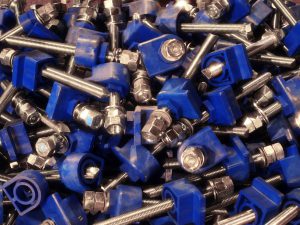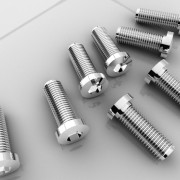Simple Tricks To Reduce Fastener Wastage In A Manufacturing Plant

In the manufacturing industry, one of the things you have to keep an eye on is reducing the costs of doing any manufacturing. This often increases the competitiveness of the facility, and is therefore something that is definitely worth pursuing.
Unfortunately, there are many issues that usually need to be sorted out when doing this, one of which is making sure that you minimize the loss attributable to fastener loss and damage. Remember that though fasteners such as Inconel center lock nuts and alloy 20 hex tap bolts might seem like minor parts of the manufacturing process, they can actually result in a major loss if they are not used properly.
The importance of auditing
One of the ways of avoiding this is by carrying out an audit regarding the types of fasteners used in any manufacturing facility. The best way to come up with an audit is to think about how the fasteners are used, and then thinking of a system that can be used to figure out whether they are used appropriately. In most engine manufacturing plants, for instance, each employee has a unique ID that they use to get fasteners from the spares section. If it turns out that a particular employee ends up using up too many fasteners during a particular time frame, they can then be audited to find out why. You can try out this and many other ways of auditing the use of the fasteners.
Make sure that your equipment is compatible with the fasteners
Another reason why you are likely to spend too much money on the fasteners is if it turns out that the machines used to put them in place are not of the correct type, or not calibrated properly. For instance, if you are using a hex lag bolt, you might need to subject it to a specific amount of torque for it to stay in place tightly. If you use too much force on it, it might end up breaking during the installation process. When this happens frequently enough, it could translate to massive losses.
This means that when investing in the machinery to be used in such a setting, you need to be very keen about the technical details of the fasteners you will be using in the facility. You should particularly pay attention to the tolerances that the fasteners should be subjected to, and ensure that you buy fastening tools that will not exceed this but will also not be too loose.
The use of all senses
Placing fasteners in place should not be an automatic process. It’s a good idea for your staff members to be able to identify problems using other senses including hearing and by touch. For instance, when they notice that the tone of a particular drill changes when they are using a specific batch of fasteners, it could indicate that either the drill is not working well, or that the fasteners are of low quality. Either way, identifying the problem in advance will make it easier to correct the problem early on.
About the Author

Started my career in the fastener world in 1969 at, Parker Kalon Corp. a NJ based screw manufacturer located in Clifton, NJ working in inventory control, scheduling secondary production and concluding there in purchasing. In 1971 I accepted a sales position at Star Stainless Screw Co., Totowa, NJ working in inside sales and later as an outside salesman, having a successful career at Star I had the desire with a friend to start our own fastener distribution company in 1980 named: Divspec, Kenilworth, NJ. This was a successful adventure but ended in 1985 with me starting Melfast in August 1985 and have stayed competitive and successful to date. Melfast serves the OEM market with approximately 400 accounts nationally.
